
Diamond anvil cell program at GSECARS
Overview - Firsts - People - Design team - FAQ
An overview
The high pressure DAC program has been running proposal-based experiments
full time since 1999. These
experiments cover various geochemical and geophysical key problems in the
Earth’s deep interior by a large user community (see DAC
publications). Example topics
that have been studied extensively at GSECARS include (1) properties of
materials by simultaneous high-pressure and high-temperature x-ray diffraction,
(2) candidate minerals and alloys of the Earth’s mantle and core, (3) high
pressure-temperature studies of melts, glasses, and other non-crystalline
materials, (4) x-ray studies of light elements for the outer planets, (5)
rheology and elasticity of minerals at high pressures, (6) magnetic, electronic
and vibrational properties at high pressures, (7) x-ray tomography with DAC, and
(8) ultra high pressure-temperature experiments.
Some research topics: crystal structure, phase transition, P-V-T EOS, rheology, elasticity, element partitioning, oxidation state, spin state, molten/liquid structure, density of liquids, electronic structure, phonon density of state, reaction kinetics, light elements (Si, O, S, C, …).
Techniques: x-ray diffraction, x-ray emission/absorption spectroscopy, inelastic x-ray scattering (x-ray Raman), Raman spectroscopy, Brillouin spectroscopy (under construction).
High P-T techniques: symmetrical DACs, membrane cells, Mao-Bell cells, laser heating system, external heating system, ruby fluorescence spectroscopy.
A few firsts:
| Firsts | Station | Dates |
| first DAC experiment | 13 BM-A | December, 1996 |
| first laser heated DAC experiment | 13 ID-C | October, 1997 |
| first angle dispersive experiment | 13 ID-D | May, 1998 |
| on-line ruby system installation | 13 ID-D | May, 1998 |
| first laser heated DAC experiment with area detector | 13 ID-D | November, 1999 |
| A separate setup at 13 BMD | 13 BM-D | September, 1998 |
| laser heating with radial diffraction | 13 ID-D | December, 2000 |
| first inelastic x-ray experiment | 13 ID-C | October, 2001 |
Some newer photos
13 ID-D upgrade (2004)
Brillouin at 13 BM-D
DAC People at GSECARS:
|
|
Vitali Prakapenka, since August, 2001. |
People previously worked at GSECARS:
|
|
Guoyin Shen joined GSECARS in January, 1997, and left to HP-CAT in September, 2005 |
 |
Tom Duffy joined GSECARS in September, 1995, and left for Princeton in January, 1997. |
| Nagayoshi Sata spent two years at GSECARS as a visiting student during 2000-2002. |
Frequently asked questions:
X-ray beam:
White
beam or mono beam?
Do
I need ID beamline or BM beamline?
What
is the x-ray beam size?
What
is the energy (wavelength)?
How
intense is the x-ray beam?
How
'clean' is the x-ray beam?
Detector:
What's
available?
Factors
for choosing a right detector?
Factors
for determining sample-detector distance?
Software:
What
are main software used at beamline?
If
I am new to almost all of them, what should I do?
Support lab:
What equipments are there at GSECARS?
Can I load sample at APS before experiment?
Factors
for designing a sample configuration?
Safety training:
Any special safety training related to DAC operation?
Misc:
Accommodations
Local restaurants
401
grill
Frequently asked questions
White beam or mono beam?
In both IDD and BMD stations, white beam is, in
principle, available. However, the DAC setup at both stations is designed for
monochromatic beam. Only in occasional case where white beam is absolutely
necessary, the use of white beam may be requested. Then additional time needs to
be planned for configuration change and other protections.
Back to FAQ
Do I need ID beamline or BM
beamline?
The main difference between ID and BM is the x-ray
beam intensity (or flux). For example for MgO at 50 GPa, the collecting time for
x-ray diffraction is typically about 10 min at BMD and 10 seconds at IDD. The
table below may help you to determine which beam line is suitable.
| Specs at sample position of the DAC setup | 13 BM-D | 13 ID-D |
| Beam size (micrometers) at FWHM | 10 (H) x 25 (V) | 5 (H) x 5 (V) |
| Energy range (keV) | 5 - 75 | 5 - 45 |
| Flux (photons/s)* | ~5x108 at 37 keV | ~1011 at 37 keV |
| YLF laser heating | off-line | on-line |
| CO2 laser heating (under construction) | off-line | on-line |
| Brillouin (under construction) | on-line | off-line |
| Raman (under construction) | on-line | off-line |
* IDD notebook#11 p. 82.
BMD notebook#22 (DAC#2) p. 160.
Back to FAQ
How 'clean' is the x-ray
beam?
X-ray beam size is measured by scanning a sharp
edge across the beam. The derivative of transmission profile is used to define
the beam size. Specified beam size is usually at full width half maximum (FWHM).
Beam sizes at 10% or even 1% maximum can be significantly larger. Such beam tail
can be 'cleaned' by secondary slits or pinhole that is close to sample position.
So a 'clean' x-ray beam is actually defined by the size and location of
so-called clean-up slits or pinhole. At GSECARS, the size of clean-up pinhole
ranges from 20 to 50 microns in diameter. Discuss with beam line staff if a
clean beam is important to you, especially when you use rhenium (or other
high-Z) gasket.
Back to FAQ
What's available?
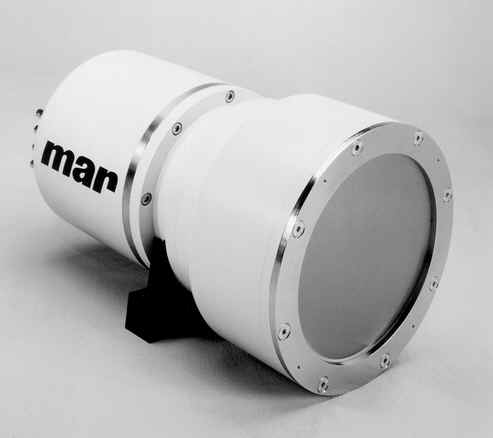 |
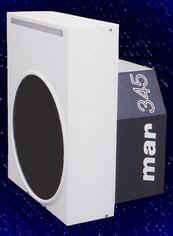 |
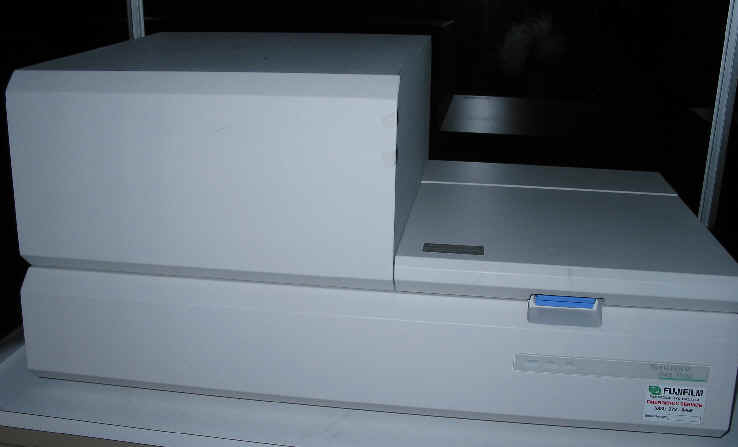 |
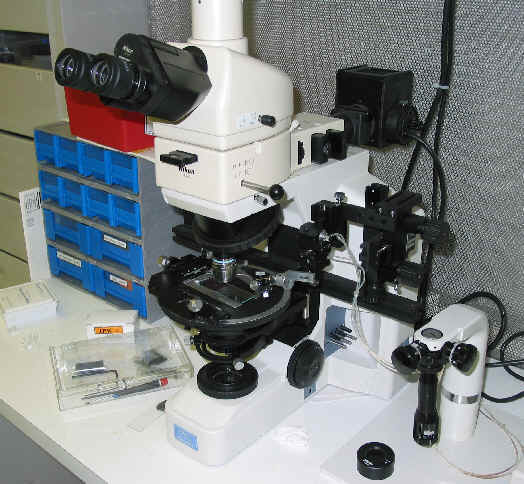 |
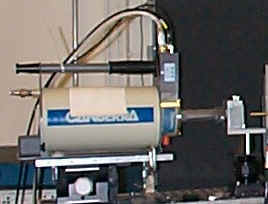 |
| MAR CCD-165 | MAR IP-345 | Fuji Reader (BAS2500) | Bruker CCD (2k) | Canberra Ge detector |
Factors for choosing a right
detector?
CCD or IP?
Below is a comparison of a few specifications between MARCCD
and MAR345
IP. (This is for reference only. For detail specifications, please visit
their web-sites.)
| Specs | MARCCD-165 | MAR345-IP |
| size in diameter | 165 mm | 345 mm |
| pixel size | >80 microns | >100 microns |
| dynamic range | 1:45,000 | 1:128,000 |
| Readout time | 3.5 sec. | 108 sec. |
| intrinsic noise | ~2 photons | ~2 photon |
For x-ray diffraction resolution, larger size of IP is
better.
For weak signals, IP could be a better choice because
collecting time may be prolonged without dark current accumulation.
In case of having poor signal to noise ratios, the better
dynamic range of IP may help in statistics.
For fast data collection, we need to distinguish two cases.
One is fast collection only once with a delayed readout. The other is fast data
collection continuously. In the case of one-time collection, the benefits of IP
still hold. For continuous fast collection, CCD has clear
advantages.
Back to FAQ
Factors for determining sample-detector
distance?
Diffraction resolution, d-spacing coverage, access
opening of a DAC, and x-ray energy.
Back to FAQ
What are main software
used at beamline?
EPICS
- the main control platform.
IDL -
used for interactive control and data analysis.
winspec, winview - for controlling detectors from Roper
Scientific, Inc.
Fit2d
- a package for analyzing x-ray diffraction patterns with area detectors.
Visit GSECARS developed
software for more.
Back to FAQ
If I am new to almost all of
them, what should I do?
The user interface is normally easy to operate. It
typically takes a few hours to get familiar with all these. However, to maximize
the use of beam time, it is recommended to read Operations&Instructions
and/or come to the beam line one day earlier to your assigned beam time.
Back to FAQ
What equipments are there at GSECARS?
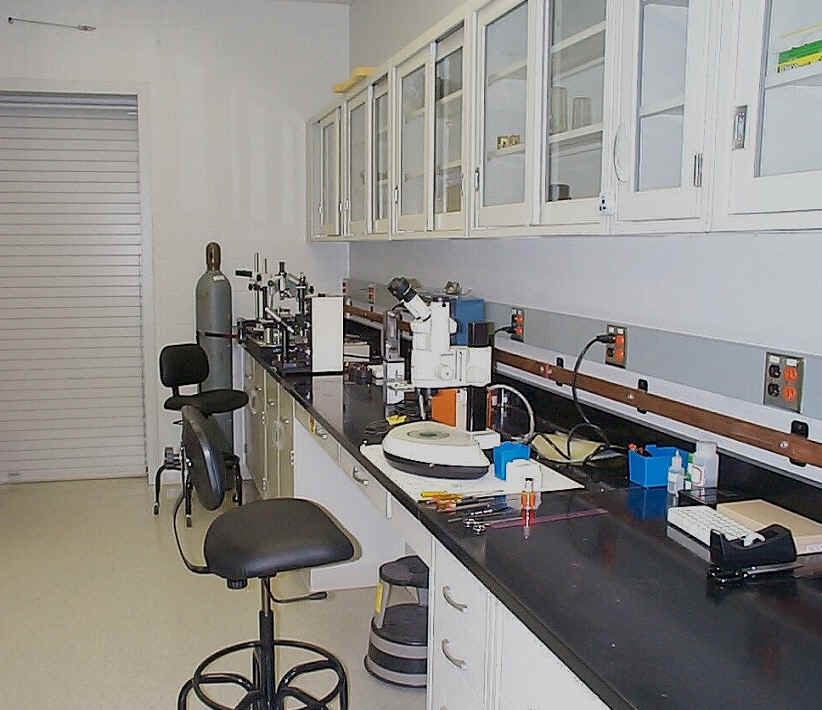
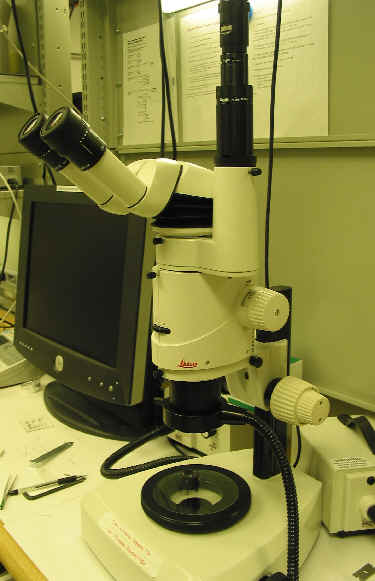 |
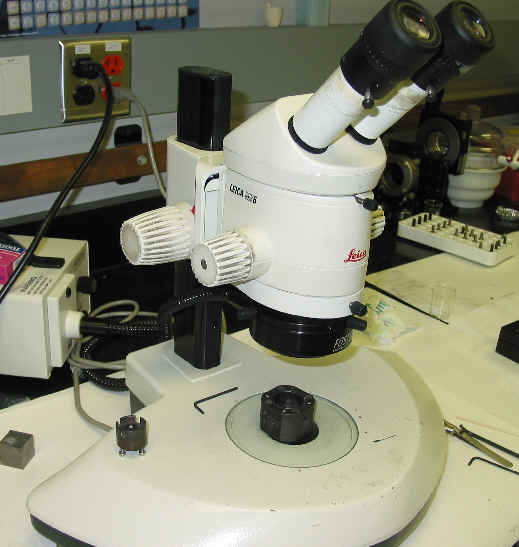 |
 |
| Leica, MZ16 with digital camera installed |
Leica, MZ6 | Nikon, E600 with micro-manipulator |
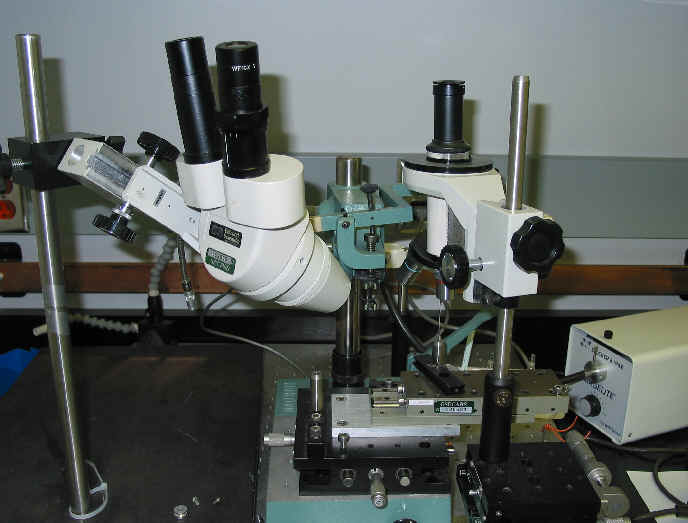 |
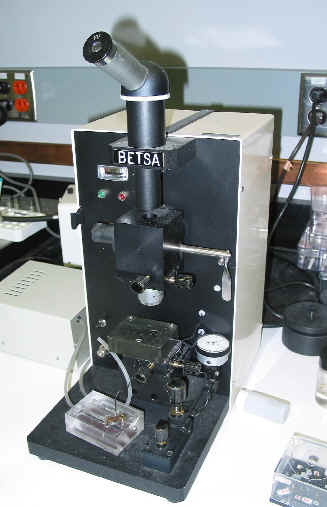 |
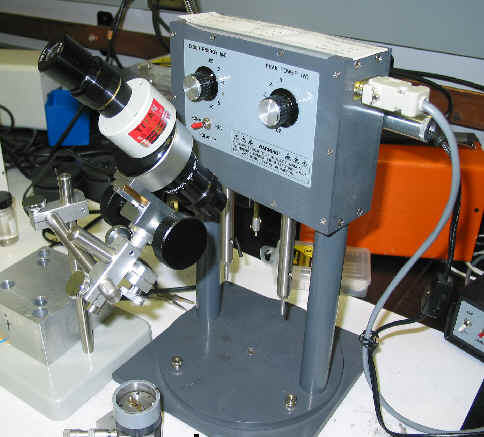 |
| Mechanical micro-drill machine | EDM machine from Betsa | EDM machine from Seatle |
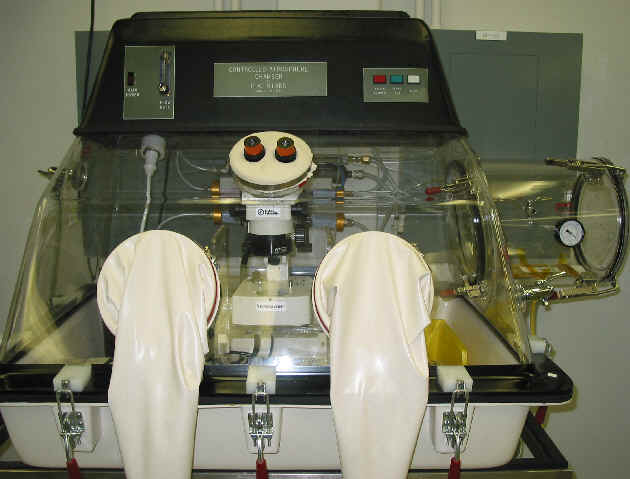 |
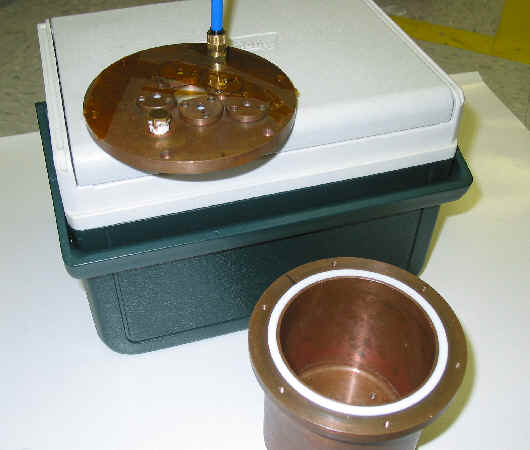 |
| glove box | container for cryogenic loading |
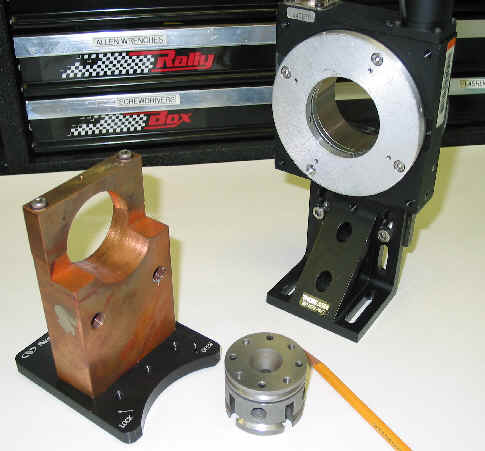 |
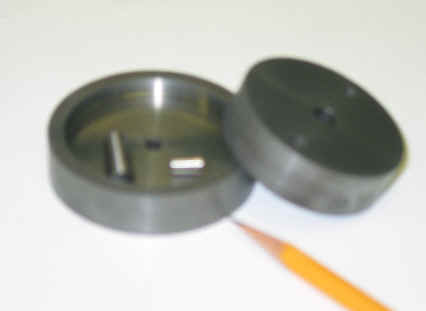 |
| DAC holders | Tools for making amorphous boron gasket |
Can I load sample at APS before experiment?
Yes. But we normally encourage that samples are
loaded before you come to APS. In fact, efficient use of beam time is directly
related to how well samples are prepared. Make sure that there are enough cells
and samples loaded before beam time. Sample loading on-site at APS is for cases
where the prepared samples do not work well.
If you need to load samples at APS because of the lack of
equipments at your home institution, then please plan a few days in advance and
discuss your plan with GSECARS staff. Check the available equipments
at GSECARS for sample preparation. If other equipments are required, discuss
with GSECARS staff.
Back to FAQ
Factors for designing a good sample configuration?
P-T range: anvil size, gasket, hole size,
indentation thickness, medium material
P-T measurement: internal standard, P-T gradient
x-ray diffraction: access opening, diffraction overlap
check, grain size, medium
laser heating: insulating layer, sample absorption,
chemical reaction
Back to FAQ
Any special safety training related to DAC operation?
Yes. Please visit GSECARS
safety plan for general information.
For laser safety, there are two types of training for two
modes of operation. User mode operation requires training at GSECARS; while
those for expert mode operation need to obtain authorization from Argonne safety
officials, which involves a safety training-class and an eye examination.
Back to FAQ
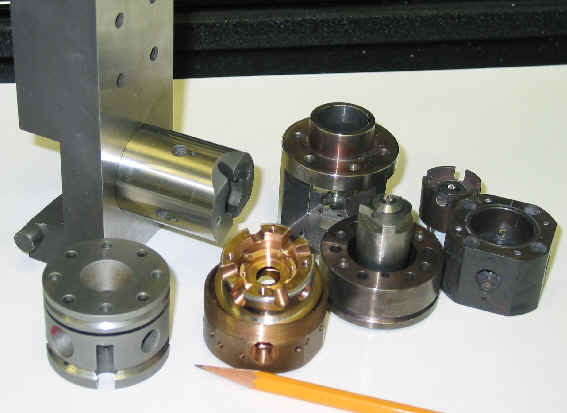 diamond anvil cells
diamond anvil cells
First DAC experiment at 13BM-A (December, 1996)
Collaborators: Duffy, Shen, Heinz, Mao, Ma, Hemley
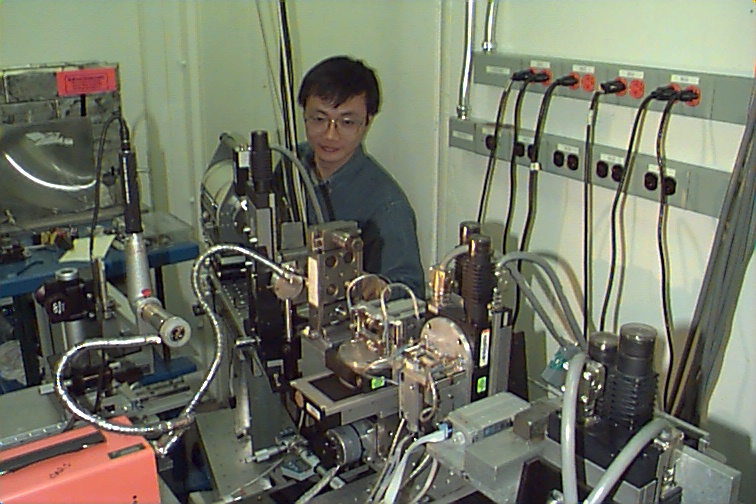
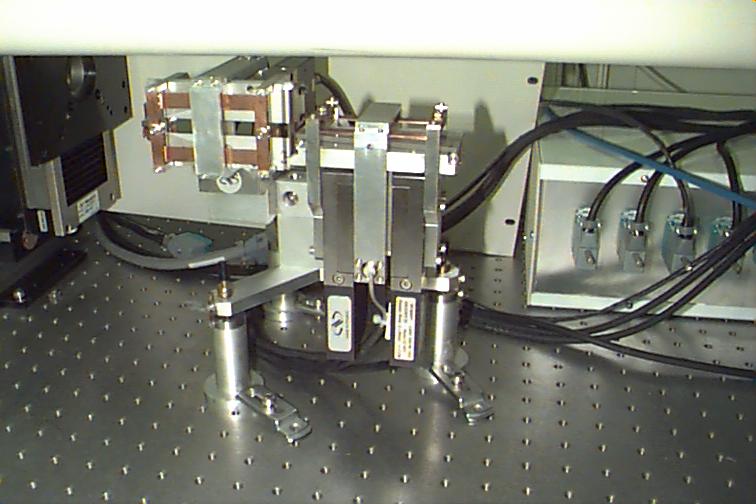
The setup in 13 ID-C for laser heated diamond anvil cell experiments
(October, 1997)
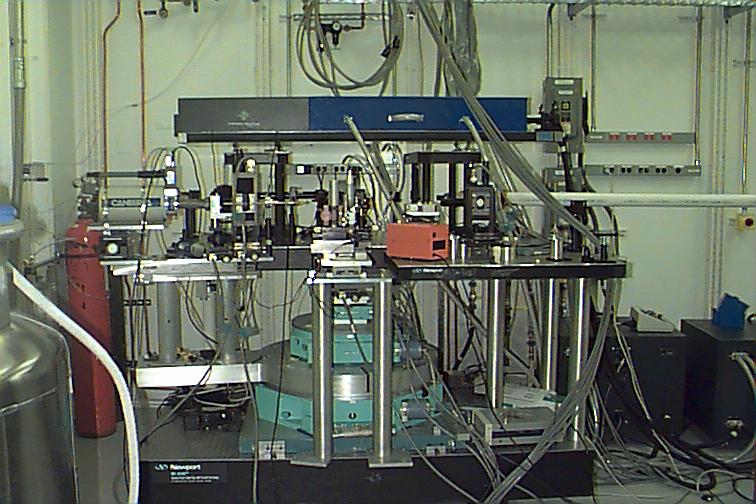
Angle dispersive experiment at 13 ID-D (May, 1998)
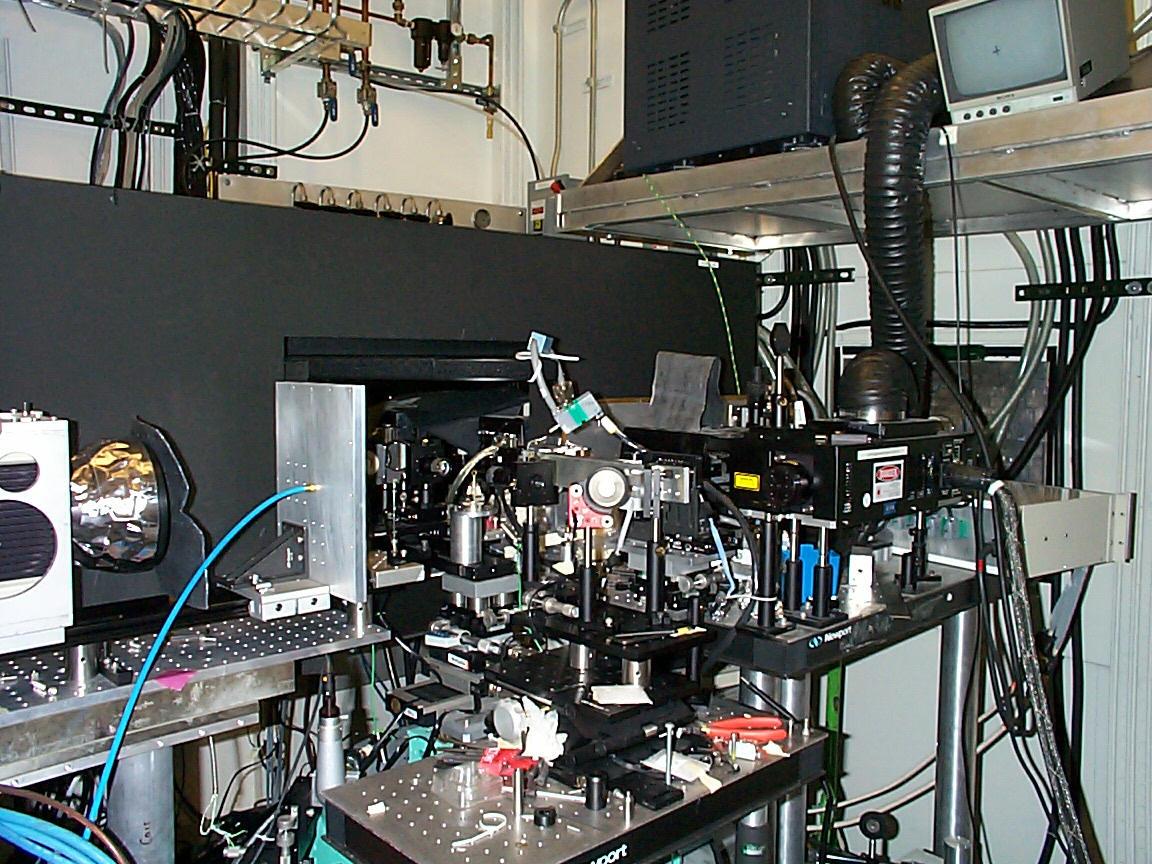
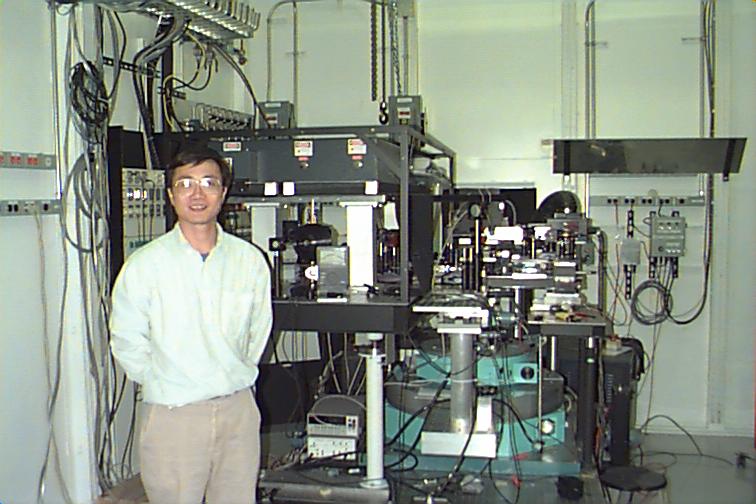
Installation of on-line ruby system (May, 1998)

Laser heating with area detector (Nov. 1999)
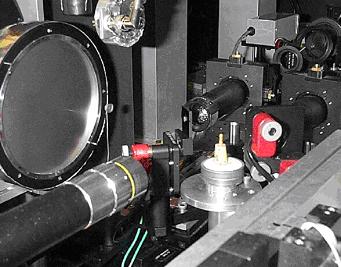
A separate setup for DAC experiment at 13 BM-D (September, 1998)
 |
|
| Energy dispersive at 13BM-D, September, 1998 | Angle dispersive at 13BM-D, December, 1999 |
Radial x-ray diffraction using area detector with laser
heating (December, 2000)
Collaborators: Merkel, Mao, Shen

Inelastic x-ray scattering experiment at 13 ID-C
(November, 2001)
(Eng, Mao, Trainer, Newville)
|
Russ Hemley, Chairman Geophysical Laboratory, 5251 Broad Branch Rd., NW , Carnegie Institution of Washington, Washington, DC, 20015-1305; phone : 202-686-2410 x2465, fax : 202-686-2419, hemley@gl.ciw.edu |
|
Bill Bassett Department of Geological Sciences, 4140 Snee Hall, Cornell University, Ithaca, NY, 14853; phone : 607-255-7502, fax : 607- 254-4780, bassett@geology.cornell.edu |
|
Dion Heinz Department of the Geophysical Sciences, 5734 S. Ellis Ave., The University of Chicago, Chicago, IL, 60637; phone : 312-702-3046, fax : 312-702-9505, heinz@gizmo.uchicago.edu |
|
Dave Mao Geophysical Laboratory, 5251 Broad Branch Rd., NW , Carnegie Institution of Washington, Washington, DC, 20015-1305; phone : 202-686-2410 x2467, fax : 202-686-2419, mao@gl.ciw.edu |
|
Li-Chung Ming Hawaii Institute of Geophysics, 2525 Correa Rd, University of Hawaii, Honolulu, HI, 96822; phone : 808-956-7825, fax : 808-956-3188, ming@soest.hawaii.edu |
|
Tom Duffy Geosciences Department, Princeton University, 418 Guyot Hall, Princeton NJ 08544-1003 phone : 609-258-6769, fax : 609-258-1274, duffy@princeton.edu
|
|
Guoyin Shen University of Chicago, Building 434A, Argonne National Lab, 9700 South Cass, Argonne, IL 60439; phone : 630- 252-0429, fax : 630-252-0443, shen@cars.uchicago.edu |